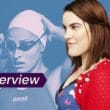Dominic Cooke discusses his second feature, The Courier, stealing from Hitchcock, heightened realism, creating articulate shots, and his forthcoming Follies adaptation.
Read our previous interviews with Dominic Cooke in our Special Issue on On Chesil Beach here. Dominic Cooke’s insights also appear in our ebook In their own words: Fiction directors, available for purchase here.

Discover one film you didn’t know you needed:
Not in the zeitgeist. Not pushed by streamers.
But still easy to find — and worth sitting with.
And a guide to help you do just that.
Two films into his feature film career after decades spent directing theatre, Dominic Cooke has already established himself as a virtuoso filmmaker who can work in a variety of styles. Both of his films — On Chesil Beach (2017) and The Courier (2020) — have defied easy classification while serving up deep character studies that cross genres. On Chesil Beach is a film we liked so much, we interviewed the entire creative team behind it in a Special Issue. On Chesil Beach was a chamber drama, a period piece sending up stuffy period ideas, a relationship story, and occasionally, a comedy. Likewise, The Courier is ostensibly a period spy drama based on real events, but it’s also more interested in relationships and societal constrictions than plot, starting out funny and getting quite dark by the end. This tendency to not be pinned down is perhaps unsurprising from the director behind the National Theatre’s tremendous revival of Sondheim’s Follies, itself a tricky if great play.
Set in the early 1960s, The Courier is based on the true story of British businessman Greville Wynne (Benedict Cumberbatch) who suddenly found himself working as a Cold War spy helping to put an end to the Cuban Missile Crisis. When Oleg Penkovsky (Merab Ninidze) made contact with the CIA about becoming a Russian source, they needed an amateur like Greville to do the leg work of getting his information, so as not to arouse suspicion. The film follows them through the thrill of the initial intelligence exchange, the deepening friendship that forms, and the aftermath of discovery. Just as On Chesil Beach explored the constrictive sexual mores of the time, The Courier is also about the restrictive societies that define both Greville’s and Oleg’s existence.
Reteaming with the production team behind On Chesil Beach — production designer Suzie Davies, cinematographer Sean Bobbitt, and costume designer Keith Madden — Cooke’s sophomore feature, The Courier, is even more ambitious than On Chesil Beach. Shot entirely on location, the film weaves between London and the Czech Republic standing in for Russia. Cooke balances a lot of plot, four central characters and a panoply of smaller roles, and several shifts in mood over the course of the runtime. The prison scenes in the second half of the film are harrowing, with Davies’ design and Bobbitt’s lighting placing us inside Greville’s deteriorating headspace.
Cooke and Bobbitt keep the camera moving throughout much of the first half of the film so that you feel the thrills of espionage even when it often amounts to people talking in rooms. The opening shot of the film is an impressive oner and tracking shot, which scans across a row of men in suits, from the neck down, before landing on Penkovsky, and only then, panning up to his face: the anonymous brains of the operation. We meet Greville with a slower moving shot, this time seeing only his feet on the golf course, along with the men he’s playing with, an apt way to introduce the titular courier. When Greville moves across cityscapes, takes flights, and moves through buildings, the camera moves with him, smoothly and almost imperceptibly. You’re just with Greville.
That also means that still shots, often reverse-shot reaction shots, stand out. One of the film’s funniest moments is when Greville asks the MI5 and CIA agent he’s dining with if they are spies, and Cooke cuts to a still two-shot of them staring almost blankly at him. Equally funny is Greville’s surprised reaction, in a two-shot with Penkovsky, while at the ballet, when Penkovsky exchanges nods hello with Kruschev.
Like so many theatre directors, Cooke is an expert at using the two-shot to show relationships between people and the space between them. In an initial meeting between the CIA agent (Rachel Brosnahan) and two male MI5 agents, the men often ignore the American by conversing in two-shots, where Cooke literally boxes her out of the frame. She has to repeatedly assert her presence and authority, which Cooke indicates through a cut to a closeup of her. Scenes set across tables often show two camps in opposition: the professional spies and Greville; the East and the West; husband and wife. On the other hand, Greville and Penkovsky are almost always seen in two-shots from the beginning, always a team and never at odds with one another. Theirs is the central relationship of the film, and what fuels Greville to take ill-advised, if historically important, risks for the sake of loyalty.
Benedict Cumberbatch is a prodigiously talented actor who has always been in desperate need of an excellent director. Some of his earliest comedic work is among his best, like as the pompous team leader in Starter for Ten (2006). But ever since Sherlock (2010-2017), he’s been more often than not asked to do “Important Roles” and rewarded for adding in as many physical tics as possible. Between The Fifth Estate (2013), The Imitation Game (2014), and his god-awful Hamlet (2015), it’s been easy to forget that he can actually be very good, in the right circumstances.
In The Courier, Cumberbatch delivers some of his career-best work, often giving hilarious reaction shots in the first half of the film, and showing harrowing physical weakness by the film’s end. It’s a virtuoso performance that would have Oscar written all over it were it in a more conventional film — especially given that they had to pause shooting for two months so he could lose weight to look gaunt and starved. Cooke, who has worked with Cumberbatch both on stage and screen (in the TV adaptation of Richard III for The Hollow Crown (2016)) curbs his worst impulses here, and helps him elicit a moving performance that is also often very funny.
Before the North American VOD release of The Courier, I sat down with Dominic Cooke to talk about telling relationship stories, why he loves rehearsals, and the brilliance of his creative team who helped him bring the story to life.
Seventh Row (7R): I understand that you got a first draft of the screenplay when you decided that you wanted to work on The Courier and then did some development. You’re no stranger to that, in the theatre, and I’m wondering if and how that process is different on film?
Dominic Cooke: The main difference is the number of people who contribute to that process. It tends to be a smaller, tighter group of people in theatre. On this film, we had three different producing entities, and each of those people have things to say. You’ve got your leading actors contributing. You’re marshalling a lot of different voices.
But I don’t really get involved working on something, whether it’s a film or a play, unless there’s an existing script with a spine to it that feels already pretty robust. This had a really strong spine straight away. At the time, I was reading tons of scripts; my agents in the States sent me a bunch. This stood out head and shoulders above anything else that I read at that time.
It is a slightly different movie. There was a key change in emphasis, but it is very much the script that Tom [O’Connor] wrote, as well. We didn’t massively reshape it in a way that some film scripts are. Because I come from theatre, I do believe in this source of the creative life of something, and that you shouldn’t mess with it too much. If you do, you’ve still got to come back to that thing that the writers have started with.
The way things are now is that, a lot of times, new writers can come in, rewrite this, do that, put some jokes in. I’m very frightened of that. Because I think, before you know where you are, you’ve taken something that’s alive and killed it. The too many cooks spoil the broth sort of approach. So I wanted to stay pure to what Tom had done, because that’s what drew me into it.
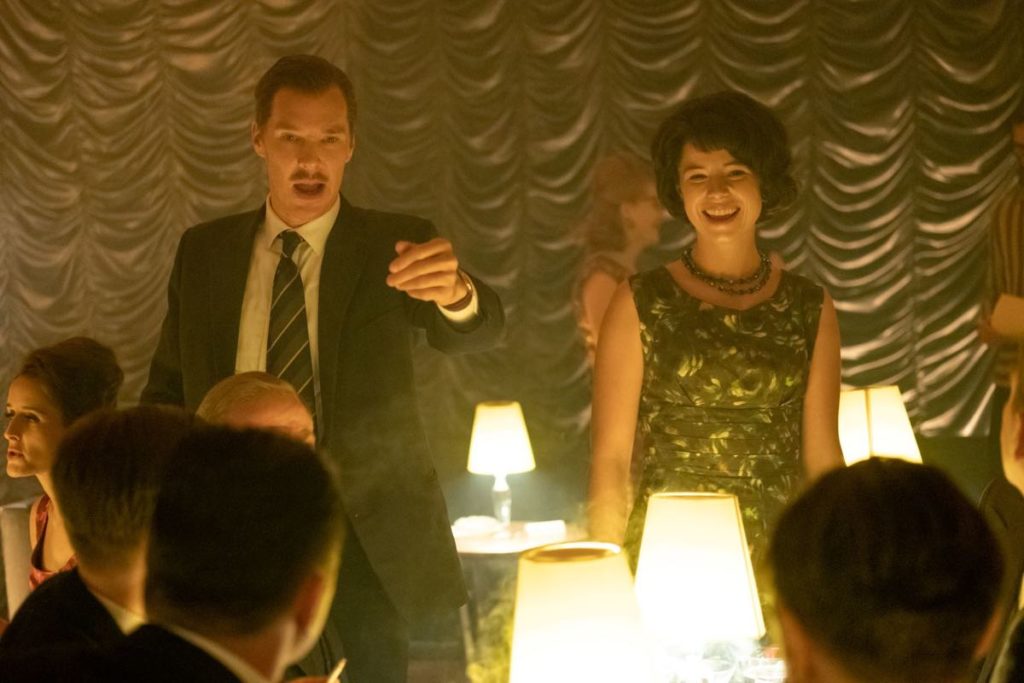
7R: What was it that drew you to the script for The Courier? In some ways, it seems almost an inverse of On Chesil Beach, but has genre elements, too.
Dominic Cooke: It’s strange that it’s set in the same time [period as On Chesil Beach]. How weird is that? That’s just a bizarre coincidence.
I’m not particularly drawn to the spy genre. I don’t hate it, either. It’s not something that sort of, “Oh, I must go see that,” when a spy movie comes out, in the way that a lot of people are, because it’s a genre that has some serious fans. I think what I really loved about [the script] was the warm heart that it’s got. It’s actually as much about the transformative nature of friendship and relationships, and the cost of espionage — the private, personal costs, which I hadn’t seen done before.
The genre is often quite cold, because it’s about calculation. Whereas what I loved about the script is you drilled into and you saw what this was costing, especially Greville, personally, psychologically, and in his relationship with his wife, and so on. I thought that was really fresh and very moving.
7R: I know you’re a fan of rehearsal. Were you able to do any for The Courier?
Dominic Cooke: We did. You never get enough because everyone’s doing wardrobe calls. Ugh, [it’s difficult] trying to get everyone together.
We had a very good rehearsal. It was relatively brief. We had Rachel [Brosnahan], Merab — all four of the main people there. I spent quite a bit of time with Merab and Benedict working through the history of their relationship, who they were. We did a lot of talking about the real people and what was useful from looking outside the research. And then, Rachel rocked up, and we worked through all her stuff. She was fabulous and so thorough.
It wasn’t a huge amount, but it was very focused. I just think it makes the world a difference. It was all table work, not getting up and doing it on our feet. It was just trying to get into what’s actually going on, what the backstory is, and so on. It really, really helps. When they turn up on set, and they’ve done that work, you’re in a different place.
7R: Is that mostly just talking through it?
Dominic Cooke: It is. We’re reading the scenes and working through them. But we’re talking about the circumstances, what’s at stake in the scene. And actually, we had [screenwriter] Tom there, so he was making some changes, as well. It’s really drilling into the circumstances around the scene, and what the intentions of the characters are. So often, on film and TV, the actors all have different takes on that. Sometimes, it doesn’t matter, because they’re great actors, and so they make you believe it.
But if everyone comes on set with a similar take on what is actually happening here, and what’s just happened before and why they’re there, and what they’re trying to do, what they’re hiding, what they’re showing, and all of those things, you have such a head start. That allows you to be creative, while you’re shooting. It allows you to find new stuff, which is what you want to do.
It was really important, especially for Merab, because he grew up in the Soviet Union. He’d grown up with this idea of Penkovsky, who’s quite famous there as a traitor, and as a really bad guy. He had a pre-existing idea of who this person was, and we had to dismantle that a bit, and get him closer to who this guy was in the script. I think it would be very hard to turn up and get where we got to without having done that work.
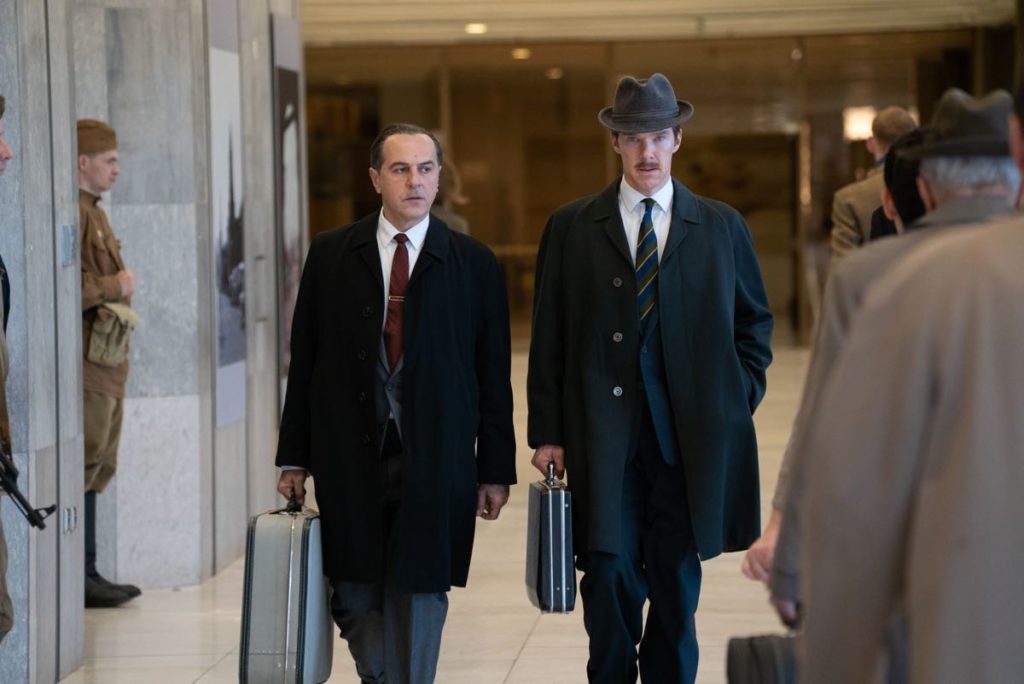
7R: The Courier has two protagonists, much like On Chesil Beach. What draws you to telling these stories of two characters? How do you think about creating the two different worlds for these characters in The Courier?
Dominic Cooke: I can’t say why I’ve been drawn to that two-hander thing. The beautiful thing about film is you can really get into the minutiae of communication between people. It’s the best form for that, because the image is so big, and so you pick up everything. When you get Saoirse, and Billy, with that sort of amazing translucency, where you can see inside their heads, and these actors, too, it’s exciting.
Drama is always about relationships one way or another. I suppose I value friendship in my own life. Different forms of relationships is what makes life worth living, as far as I’m concerned. So I’m always drawn to that.
The world stuff was fascinating. It was quite useful having done On Chesil Beach, because I sort of knew what the feel in Britain was, in the early ’60s. It was a sort of weird Edwardian world. The ’60s we think of hadn’t happened. I knew that, and I knew how formal and uptight everyone, or the culture, was.
I studied the Soviet Union at school. I went to the Soviet Union on a school trip, which was very useful. I’ve been to Russia quite a lot over the years. I think probably, if you took two cultural archetypes, the classic Brit and the classic Russian are about as far apart as you could possibly get. Brits, especially in this period, are all about hiding and ruling the Empire, so you mustn’t let anyone see what you’re really feeling. And Russians are so present in their own feelings, and they have lots of emotional mobility. They’re very, very different cultures and very different ways of being.
Whilst we were very careful about certain visual elements of the world, we wanted to make a point about how similarly repressive, in some ways, the cultures were. This is a film about two individuals who are sort of outside their own cultures. Rather than do the more obvious thing of, “This is what London is like; this is what the Soviet Union is like,” we shot them using the same colour palette and in the same style. We wanted the film to be more about individuals in societies not about West and East, although that’s there, obviously.
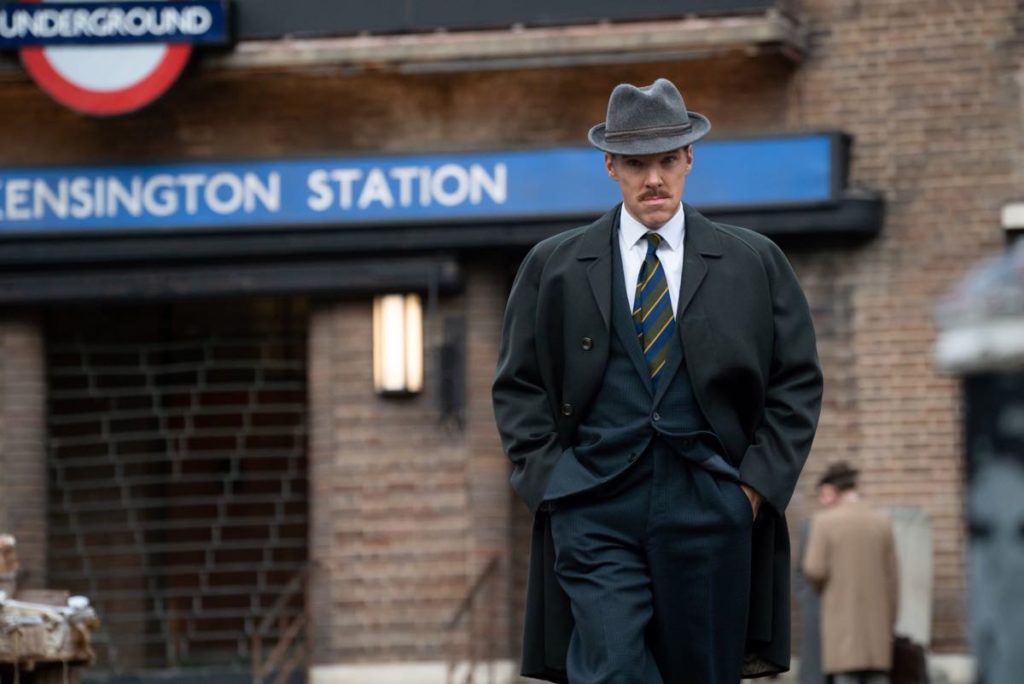
7R: What did that mean for the choices that you were making?
Dominic Cooke: I’ll give you an example. Some of these were pragmatic choices, because we were trying to do something that’s quite epic with a fairly modest budget. Most of the movie is shot on location, but we did some builds within the locations we shot. We never shot anything in the studio, but we did these little builds. So we’d be shooting in the town hall, doing something, and then we’d take one of the rooms, and do a little build.
The apartments, the homes of both Greville and Penkovsky are exactly the same set. There’s no difference apart from the wallpaper. We positioned the camera slightly differently, but the layout is exactly the same. We were doing stuff like that to make this connection between the two of them. It’s subliminal.
With two exceptions, there’s no nature in the film at all. There’s no trees, there’s nothing. So if we went to a location that had trees, it was banned. I wanted it to be about people in a completely man-made world.
In the film, there’s quite a lot of architecture that’s very repetitious. You get rows of windows that are exactly the same. We did that quite a lot. We did it in London as well as in the Soviet Union scenes. The place we chose for Greville’s home — he did live in a sort of Georgian house in Chelsea — but the square we chose, we chose because all the doors were painted exactly the same colour. All the railings were exactly the same. We did a similar thing with Penkovksy’s place which is a mix of CGI and a real extraordinary apartment block we found just outside Prague.
We were doing stuff like that. They’re all subliminal things, but they create a feeling.
7R: I was going to ask you about working with production designer Suzie Davies again. It’s interesting that it was all on location, because you guys did this amazing build for the hotel room in On Chesil Beach. For The Courier, how did you think about creating those psychological spaces?
Dominic Cooke: I think Suzie Davies is just brilliant. Because I come from theatre, my first point of gravitation is the designer, because that’s where you start making a piece of theatre. And actually, in terms of planning the timelines, you tend to start with the designer. The thing I love about Suzie, and I’ve encountered this with some of my favourite theatre designers, is that they’re primarily storytellers. The aesthetic side of it is secondary. That’s the tool that they use, as storytellers. And she’s got a brilliant storytelling instinct.
She was the one that came up with the idea that we should make the two apartments the same. Between her and Sean Bobbitt, and then working with our costumes guy, Keith, we sort of shaped [the aesthetic] through the pre-production, especially on location scouts. There were tons of location scouts on this. You’re sitting in the back of a car or whatever, and you’re gradually shaping what works and what doesn’t work, and what feels right and what doesn’t feel right. And then, we came up with a really clear set of rules that we want to use. They were very helpful because they focus your decision-making.
7R: What were those rules?
Dominic Cooke: Well, stuff like the colour palette. We used a really, really narrow colour palette. Stuff like no nature. Most of the architecture is twentieth century, where we could get it to be twentieth century, because we wanted the systems to feel like they were twentieth-century systems that people were living in. We wanted big scale buildings, as much as we could.
The thing about having phones is you’re taking photographs. I’ve got so many photographs from location scouts on this movie. You’re looking at the colours that you’re shooting and going, “Well, actually that building’s great.”
So I’ll give you an example. A lot of London is red brick. We did a whole lot of scouting around where the Royal Albert Hall is. Those buildings are all quite strong red terracotta. We immediately went, “No, we’re not having any terracotta. We don’t want that,” because it was too warm. We wanted the world to be a bit colder and harder.
It’s those kinds of things, but she’s [Suzie is] brilliant at it. I think we share a sense that every visual thing you do is a storytelling choice. It’s the sort of world that you’re putting your characters into.
She’s just great, and she’s fun, which, of course, is a lovely thing, because it makes the work easier. You’re together a lot. On this, we went all over the place. We were flying all over Eastern Europe, and just together all the time. That rapport is important in getting the work done.
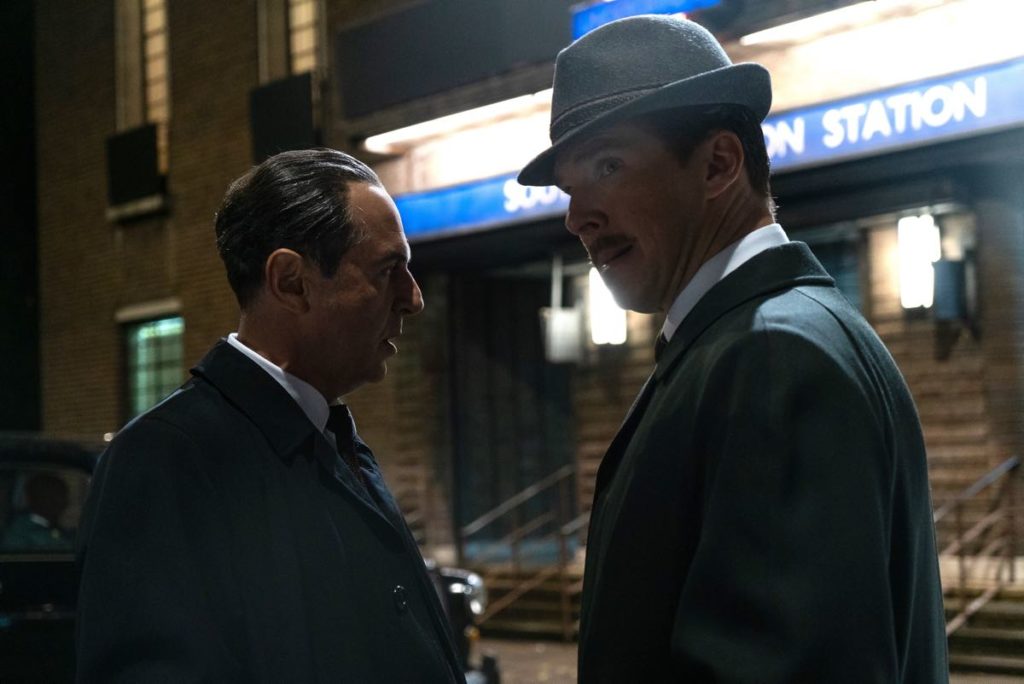
7R: Something that you talked about with On Chesil Beach was heightened realism, especially for the sound, which sounds how the characters feel. How did that sensibility play into The Courier?
Dominic Cooke: It’s there all the time. It’s there in what we’ve just been talking about. It’s there in the way that you create someone’s room as almost like a headspace. In dramatic storytelling, we’re always dealing with a heightened reality. But I think it was really, really clear in the last section when we’re in the prison. We did it all very handheld and very rough. We wanted the audience to really feel that they were in that space with Greville. It’s never objective. It’s always subjective with him.
One of the things I did on this film is I watched a lot of Hitchcock early on. I’m obsessed with Hitchcock. I’ve watched his films a million times, and I love that book of him and Truffaut interviews which I think is so brilliant on storytelling. Just generally applied to any form of storytelling, I think they’re amazing. I watched stuff like North by Northwest. That’s the film that jumps out to me right now. But those films where you get this sort of paranoid horror of something happening to you, and you don’t really know what’s happening. I was like, “Well, how does he do that? How does he get you into that space, where you feel like you’re Cary Grant in North by Northwest, and you’re like, ‘What the hell is happening?’” It’s visceral.
If you look at the sequence in North by Northwest where the plane is flying into the cornfield, he tends to use three types of shots. He uses a wide context shot, where you see the vulnerable person with the plane coming towards him. Then, he’ll use a tighter shot, where you get the feeling, the reaction of that person. He does it a lot. And then the third type of shot he does is POV — not over the shoulder, but absolutely from the person’s point of view, as if the camera is their eyes. We used quite a lot of that through the film.
Say, for example, you’ve got Greville Wynne arriving at the airport in Moscow. If you look at the sequence, we’ve done exactly that. He’s walking through the airport, and we’ve got one of those things. The shots where you’ve got the camera being him, looking at the guards [who are] looking into the camera, really make it come to life. So this is theft. I stole it from Hitchcock. I found it really interesting. You just can never do that with theatre. You can never put the audience in that place.
7R: Something that Sean Bobbitt said about On Chesil Beach is “You have that big screen. You must use it.” How did you think about that for The Courier?
Dominic Cooke: Yeah, he’s brilliant. He’s someone who really understands the heightened nature of the story and the frame. It’s not just his composition. What I love about him is a similar sort of thoroughness. Both of us feel that every shot should be articulate. It’s no good just having a shot that looks good or that serves the function of the story. You want it to be more than that, to be articulate about where they are, so there’s a feeling in the shot.
With Chesil, it was those amazing landscapes, and they get stuck in this room. With this film, it was the scale of the architecture. That’s how the frame is really used. Often, in the internal shots, there’s quite a lot of verticals, cutting the frame up into different rooms and different vistas. It’s quite angular and sharp.
In this, we moved the camera more. For example, there’s one shot that we decided to do in the moment. It took ages to set up. On set, I decided in the moment, “Maybe we should do this,” [and Sean was like], “Ermmm it’s going to take a while.” It’s the scene where Greville is in a restaurant, and he realizes that he’s being [recruited by MI5].
The camera’s position completely shifts from being very formal, and it crosses the table and moves in. Suddenly, we’re facing him. That was, I thought, a really successful shot, because it’s putting the audience in the position of him, moving into him at the [key] point. It’s nothing original. It’s done all the time. But I just thought that we timed that well. I would rather spend half the day doing that, and then not have to do loads of closeups and loads of different setups.
7R: What was the editing process like for The Courier?
Dominic Cooke: The editing process was quite complicated and long-winded on this film. I think it was because it was a genre [film]. The producers felt, in some way, that the genre was slightly uncertain. And I was like, “Good!”. I don’t see the point of doing a film in a genre and just doing the genre as it’s always done. The films that I like are the ones that push outside a genre.
Think about a film like Get Out, which I loved, which uses the genre of the horror movie, but adds this extraordinary political element into it. I love where you take something and slightly tilt it.
I always felt, when I read the script [for The Courier], that this was an unusual movie. It’s a sort of hybrid. It’s not really even a thriller. It’s a spy movie and a drama. Its emotional heart is as important as its thriller or suspense elements. Getting the balance right was hard. Getting the balance right so it wasn’t either one thing or the other, but it still had tension. One of the things that was happening while we were putting together one of the early cuts was, the notes I was getting from the producers were, “It’s too funny!”
7R: It’s very funny in the first half.
Dominic Cooke: We brought some of the humour back, actually. But I think they felt that the very first cut was so funny in the beginning, that it was hard to get the audience back. They were laughing at it too much. They didn’t know where they were.
Part of the challenge with an edit is to navigate the audience through the story, so that they know enough to feel confident in you, but they don’t know too much, so that they want to know more. With this, because it’s so plotty and all about doing things, it really was quite hard to get it right. It took a long time.
I had two editors, actually, and they’re both absolutely brilliant. I think we got somewhere good. We did a bit of [test screening], which is useful with a film like this, where you see what people are feeling and thinking. The post-production was the better part of a year on this.
7R: I was so excited to hear that you’re planning to adapt Sondheim’s Follies for the screen after doing the revival at the National Theatre. Can you tell me anything about the plans for that?
Dominic Cooke: We’re getting somewhere with the script. I’m getting to a place now where I’m ready to share it with more people. I’ve got a brilliant producer called Rosie Alison, who’s David Heyman’s top producer, and she’s fantastic on scripts, I mean, just knock out. I’ve had such great input from her.
It’s got a long way to go in terms of getting the script agreed and signed off. I’m sure there’ll be more work to do on that. And then, pulling a cast together, which at the moment, is so difficult, because this is a big cast. It took us a long time to cast the stage show. It’s a demanding cast, because both of the writers are very specific about who these people are. And they need to be able to sing and dance. It’s complicated.
At the moment, it’s just very hard to get people to commit to things because they’re still honouring all of their pre-COVID commitments. It’s really proving to be tricky. So who knows when it will all come together, but I hope it will. It took me a while, but it’s beginning to feel right.
You could be missing out on opportunities to watch great films like The Courier at virtual cinemas, VOD, and festivals.
Subscribe to the Seventh Row newsletter to stay in the know.
Subscribers to our newsletter get an email every Friday which details great new streaming options in Canada, the US, and the UK.
Click here to subscribe to the Seventh Row newsletter.
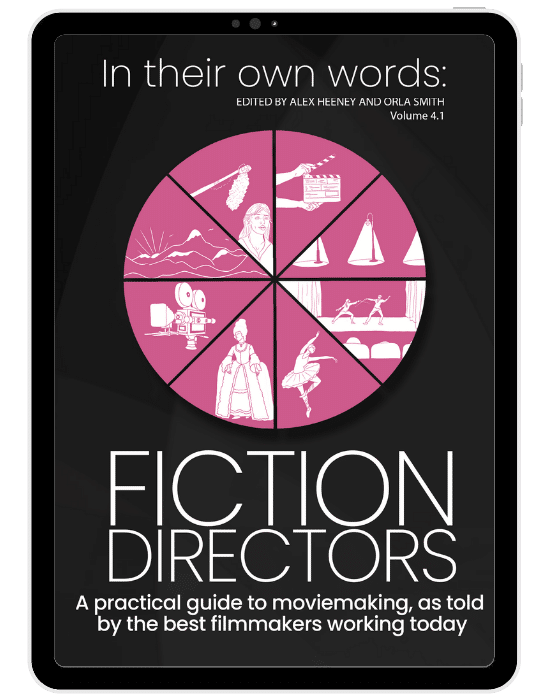
Discover how the best filmmakers working today approach filmmaking
A practical guide to moviemaking, as told by the best filmmakers working today.
